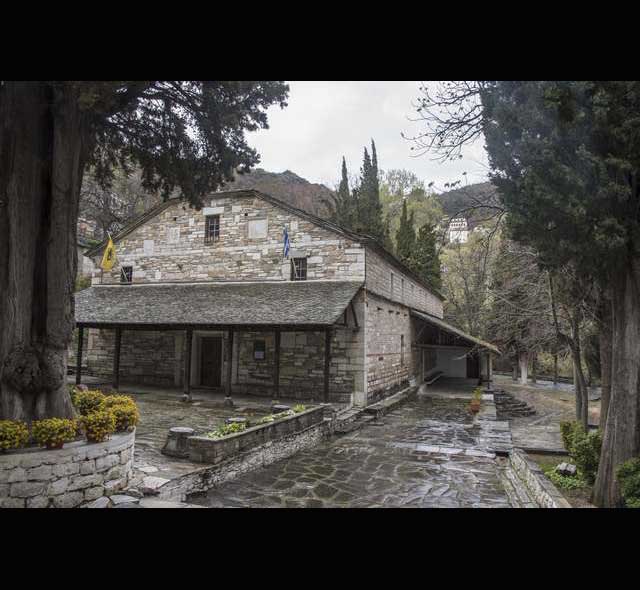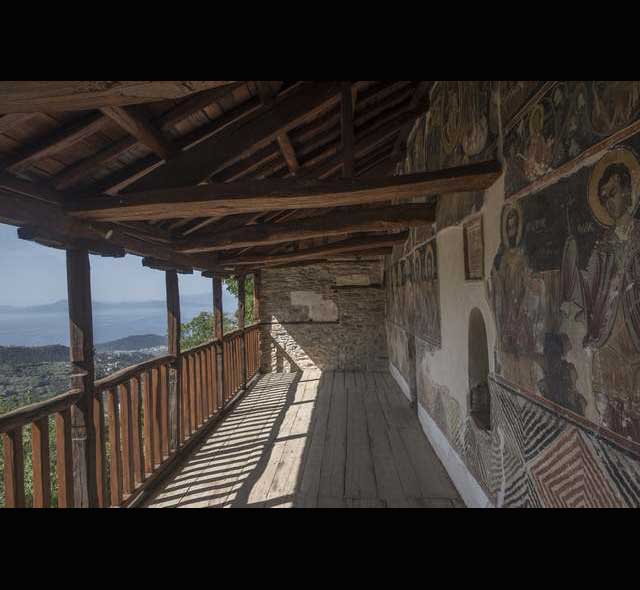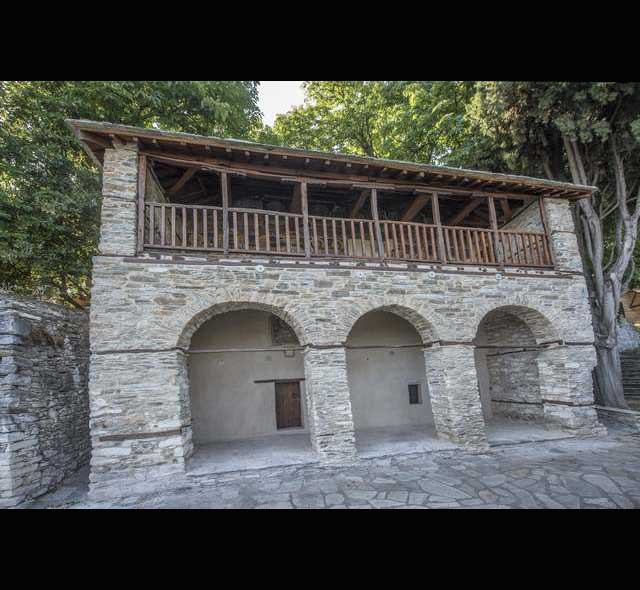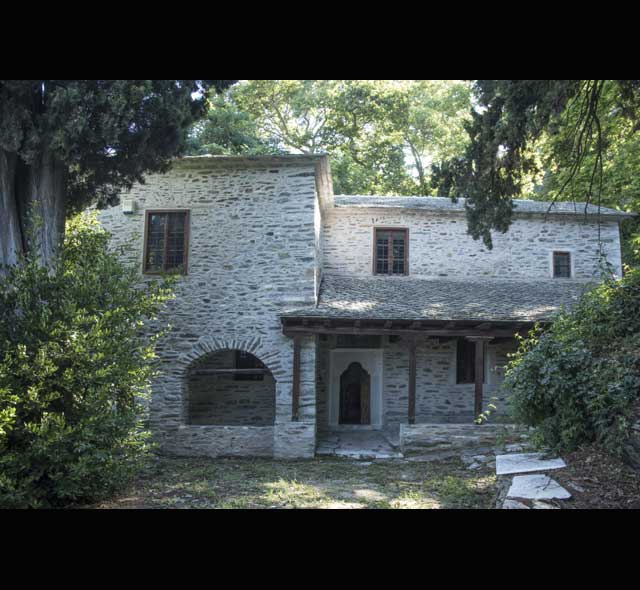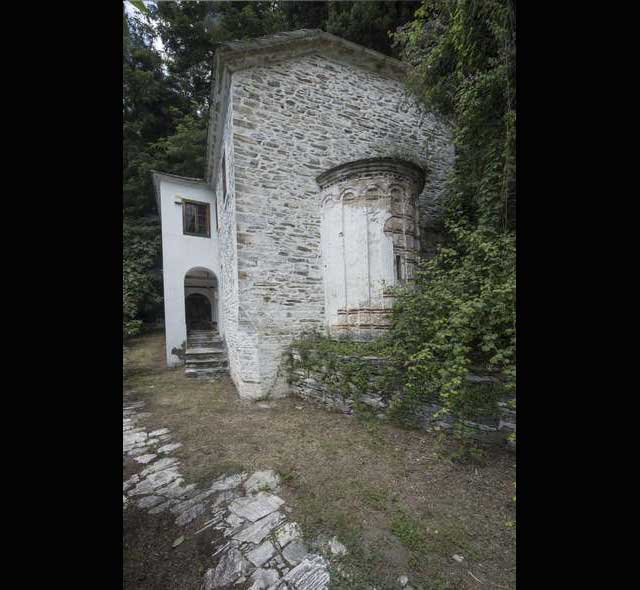|
Church of Timios Prodromos |
The geographical location, the political, cultural and intellectual tradition, the early national self-consciousness, as well as the rich ecclesiastical and other historical influences received from its foundation until the time of its heyday, shaped the ecclesiastical identity of Makrinitsa and its timeless unity with orthodox faith. Thus preserved undiluted its ecclesiastical self-consciousness, despite adverse historical conditions and recurring adventures, that marked the course of the local population during the eight centuries of its historical course.
Makrinitsa has a plenty of remarkable Churches, scattered throughout the traditional settlement and its region as a whole. All are decorated with folk stone relief, fine art hagiographies and lots of tributes.
|
Church of Assumption of the Virgin Mary |
This fact testifies both the material wealth of the settlement, as well as the close association of its inhabitants with the Church and the Orthodox Faith.
Each neighbourhood has its own Church, from which, as a rule, has taken its name: Panagia, Metamorphosis, Holy Trinity, etc.
As the visitor starts from the central Square, the first that faces to the northwest is the graceful church of Timios Prodromos, built in 1806. Elegant single-aisled basilica with a built arched outer narthex on its south and west side, with rich stone relief decoration and a multitude of representations and inscriptions, is unique elegant artwork of post-Byzantine architecture.
|
Church of Agioi Pantes |
The uphill cobbled road leads to the monastery complex of Panagia, which includes the "Despotiko", the unique in the entire Pelion, two-storey church of Agioi Pantes and Saint Nicholas, and the small church of Agioi Anargyroi, while the area is dominated by the famous bell tower, visible from every part of the settlement.
|
Church of Saint Nikolaos |
The church of the Assumption of the Virgin Mary, which is the central parish church of the village, was built in 1767. The earthquakes of 1955 destroyed a large part of it, which ten years later was restored with the financial contribution of the Greek-American Hadjikonstantinos Utskounis.
The sculptures that come from Demetrias are built-in with admirable unity. The Church has to offer some of the finest examples of Greek folk stone sculpture.
|
Church of Saint Ioannis Kakounas |
A little further north, in the square of Kakouna neighbourhood, the newly renovated Church of St. John the Theologian dominates, while at the village's highest point the Nunnery of Agios Gerasimos the Young.
Below the main square there are other churches, each with distinctive features.
The churches of Saint Athanasios and Saint George have a rich stone-sculpture decoration and are connected by a cobbled path and a double line of cypress - work by folk planner Philip Tsikrikitsis, who designed many bridges, squares and cobbled streets in Makrinitsa.
The Church of the Holy Trinity is known for the drawings and hagiographies of folk painter Giannis Pagonis, while the Church of Transfiguration, work by folk architect Dimos Zoupaniotis, is decorated with sculptures by sculptor Milios. Lesser known are the churches of Saint Nicolas and Saint Anthony to the side of Sarakinos.
Finally, one can also visit the Church of Saint Mary Magdalene in the neighbourhood of Koukourava, which during the great boom of tanning had experienced exceptional development. This precisely is imprinted on the rich tributes of the Church, many of which come from Odessa.
In Makrinitsa one meets masterpieces of ecclesiastical art of another era. These speak very eloquently for the great prosperity of the settlement and the firm commitment of its inhabitants to Orthodoxy. The multitude of the Holy Churches, along with the chapels and the monasteries, verify once again, for this pretty settlement as well, the description of Pelion as "Mount Athos of Thessaly".
|
Church of Holy Trinity |
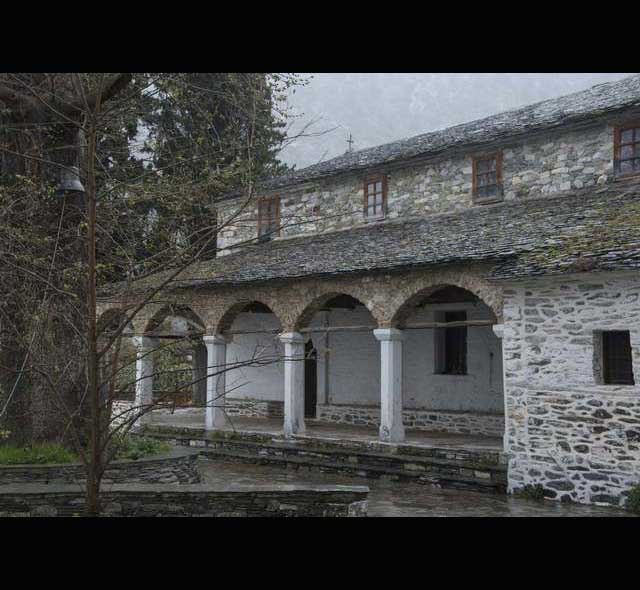 Church of Metamorphosis of the Savior |
|
Church of Saint Maria Magdalini |




